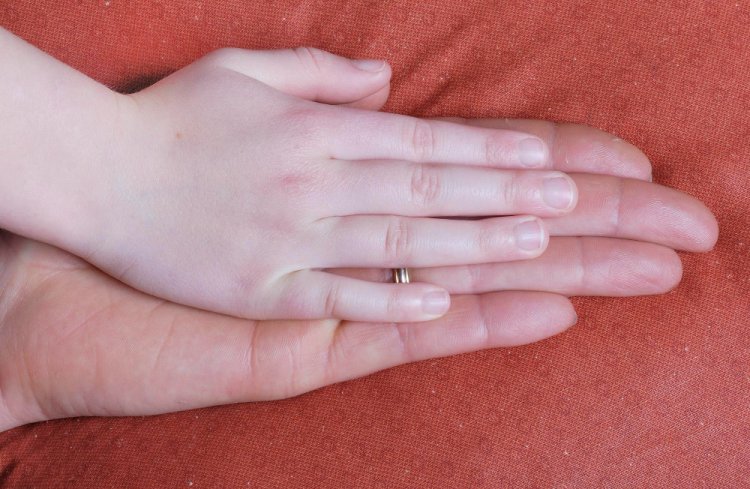A Closer Look at Marfan Syndrome: Symptoms, Risks, and Management
Marfan syndrome is a rare genetic disorder that primarily affects the connective tissue in the body, often due to genetic mutations. Connective tissue is crucial for providing support and structure to various organs in the body. Marfan syndrome arises from mutations in the FBN1 gene, which encodes the protein fibrillin-1. These mutations can affect the elasticity and strength of connective tissue, leading to a range of systemic issues. Individuals with Marfan syndrome typically exhibit tall stature, slender build, and long limbs. One of the most commonly affected areas is the heart and vascular system, with aneurysms and heart valve issues being prevalent. Additionally, distinctive features may also manifest in the eyes, skeleton, and skin. Treatment for Marfan syndrome involves a multidisciplinary approach aimed at improving the patient's quality of life and managing symptoms.

What is Marfan Syndrome?
Marfan syndrome is a hereditary condition that affects the fibers supporting and stabilizing the body's organs and other structures. It most commonly impacts the heart, eyes, blood vessels, and skeleton. Individuals with Marfan syndrome often display tall stature and slim build, with unusually long arms, legs, fingers, and toes. The damage inflicted by Marfan syndrome can vary from mild to severe.
Causes of Marfan Syndrome
Marfan syndrome has a genetic basis, making individuals with a family history of this genetic mutation more likely to develop it. However, in some cases, it may occur without a familial pattern due to unknown reasons. This syndrome arises from mutations in the FBN1 gene, which controls the production of a protein called fibrillin. Fibrillin plays a crucial role in regulating the structure of elastic fibers in the connective tissue, maintaining the structural integrity of various organs. Genetic mutations disrupt the normal function of fibrillin, resulting in weakened, non-elastic connective tissue. This condition can manifest in symptoms such as elongated limbs, flexible joints, eye anomalies, and heart problems.
Symptoms of Marfan Syndrome
Symptoms of Marfan syndrome vary from person to person due to the widespread presence of connective tissue throughout the body. While some individuals may exhibit mild or only a few symptoms, others may experience more severe issues. Common symptoms include:
- Physical Features: Individuals with Marfan syndrome often have distinctive physical characteristics, such as being taller than average. Long arms, legs, and fingers are prominent features. Joint hypermobility, flexible joints, and elongated fingers are also frequently observed.
- Eye Anomalies: Eye-related symptoms are common in individuals with Marfan syndrome. These may include lens dislocation, myopia, and color blindness.
- Cardiovascular Symptoms: Marfan syndrome can affect the cardiovascular system, leading to serious complications such as aortic enlargement and aortic dissection. Heart valve problems are also common.
- Skin Symptoms: Skin-related symptoms may also be present in Marfan syndrome, including soft skin, easy bruising, and subtle scarring.
- Other Conditions: Marfan syndrome is also associated with other conditions such as scoliosis (spinal curvature) and chest wall deformities. Individuals may also experience fatigue and weakness.
Diagnosis of Marfan Syndrome
Recognizing the symptoms of Marfan syndrome is crucial for preventing and treating serious, potentially life-threatening complications. Diagnosis may be challenging as symptoms can vary widely among individuals, and some may not manifest until later in childhood or adulthood. Accurate diagnosis is essential for implementing proper monitoring and management strategies. Diagnostic methods may include:
- Physical Examination: Diagnosis typically begins with a detailed physical examination by a specialist. This involves assessing height, body proportions, joint flexibility, eye anomalies, and skin symptoms.
- Eye Examination: Eye exams are performed to detect common anomalies associated with Marfan syndrome, such as lens dislocation, myopia, and other vision problems.
- Echocardiography: Imaging techniques like echocardiography are used to evaluate the cardiovascular system. These tests can identify aortic enlargement, heart valve issues, and other cardiovascular complications.
- Genetic Testing: Genetic testing can support the diagnosis of Marfan syndrome by identifying mutations in the FBN1 gene.
- Family History: A thorough family history is important for diagnosing Marfan syndrome. If other family members have been diagnosed with the condition or exhibit similar symptoms, it provides valuable information for diagnosis.
Treatment of Marfan Syndrome
While there is no cure for Marfan syndrome, various treatments aim to alleviate symptoms and improve quality of life. A personalized treatment plan, often involving input from multiple medical specialties, is tailored to each individual. Common treatment approaches include:
- Cardiovascular Monitoring and Medication: Given the prevalence of cardiovascular issues in Marfan syndrome, regular monitoring is essential. Medications such as beta-blockers and angiotensin receptor blockers can help regulate blood pressure and control aortic enlargement.
- Orthopedic Intervention and Physical Therapy: Marfan syndrome can affect the skeletal system, leading to conditions like scoliosis. Physical therapy may be recommended to improve posture, strengthen muscles, and manage pain. In severe cases, surgical options may be considered.
- Eye Health Monitoring: Regular eye exams are important for monitoring and managing eye-related symptoms. Early diagnosis and treatment can help mitigate vision problems.
- Genetic Counseling: Since Marfan syndrome has a genetic basis, genetic counseling can help individuals and their families understand their genetic risks. It can also assist in assessing the risk of Marfan syndrome in future generations.
- Lifestyle Changes: Adopting a healthy lifestyle is crucial. Regular exercise, balanced nutrition, and stress management can support overall health and well-being.
#MarfanSyndrome #ConnectiveTissueDisorder #GeneticMutation #Symptoms #Diagnosis #Treatment #GeneticCounseling #QualityOfLife #RareDisease #HealthAwareness #MedicalResearch #HeartHealth #EyeHealth #Orthopedics #Genetics #Healthcare #PatientCare #AwarenessCampaign #SupportCommunity #EmpowerPatients
Disclaimer:
The information provided in this article is for educational purposes only and should not be considered medical advice. If you have any health concerns or are experiencing symptoms, it is important to consult with a healthcare professional, such as a doctor or clinic, for proper diagnosis and treatment. Always seek the advice of your doctor or other qualified health provider with any questions you may have regarding a medical condition. Do not disregard professional medical advice or delay in seeking it because of something you have read in this article.
What's Your Reaction?





















